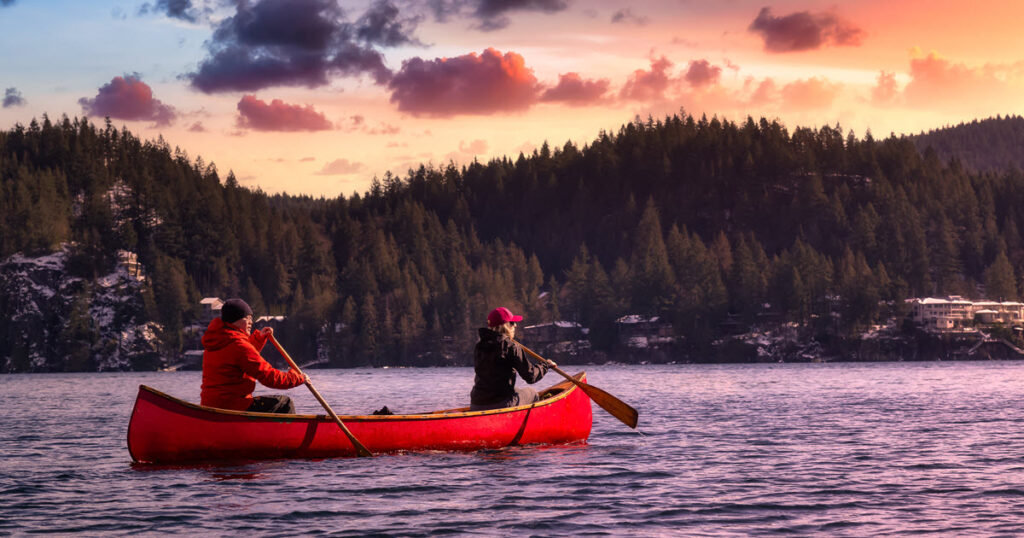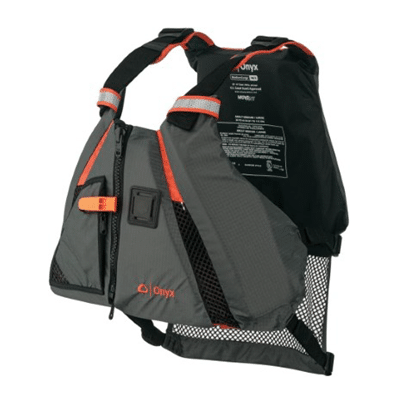There are many reasons I love canoeing, but the canoe’s speed definitely isn’t one of them. As a relaxing activity in the great outdoors, going out on the water in a canoe is a fantastic choice. But how fast can a canoe go? What is the average canoe speed?
If you need to get somewhere quickly, a canoe shouldn’t be your mode of transportation. In fact, you could probably walk there more quickly!
The average canoe speed is about 3 miles per hour. This applies to most canoe designs and paddling styles. However, there are certain circumstances where you may have a slower or faster speed. For example, you may choose a canoe with a faster and more aerodynamic design, or a design that provides your canoe with more stability but less speed.
Also, as we’ll discuss below, there are other factors that can impact a canoe’s speed in the water.
Factors that Impact a Canoe’s Speed in the Water
There are certain factors that impact the speed at which your canoe moves in the water when you paddle. Let’s take a look at them below.
Environmental Factors
This includes weather conditions. Your canoe speed will be slower than 3 miles per hour if there is a lot of wind and the weather is creating choppiness or any other kind of volatility in the water. This is usually true no matter how hard you try with your paddling.
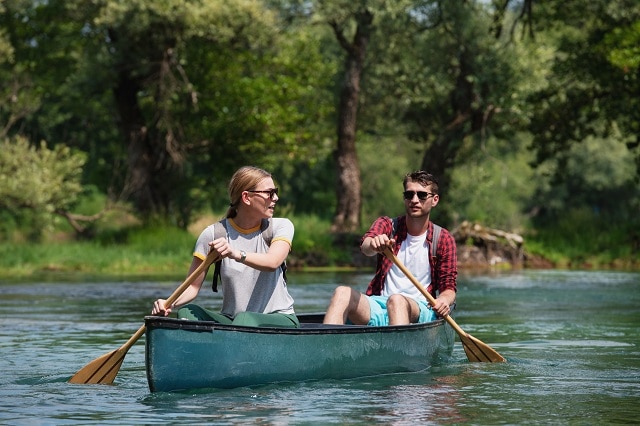
The weather conditions best for optimal canoe speed are lots of sun with calm water. When you have the advantage of exceptionally tranquil waters, you may be able to go faster than 3 miles per hour, which is the average canoe speed.
Canoe Structure and Design
There are several different canoe structures and designs available on the market. Some of them are specifically made to travel more quickly than others. If balance and stability are more important to you, look for a canoe designed to optimize those features.
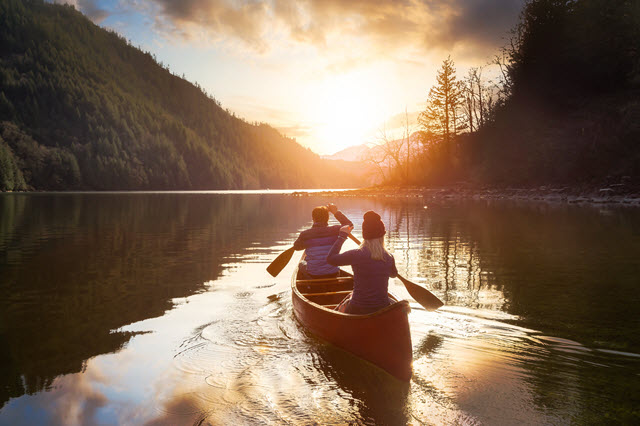
For a canoe with the ability to exceed the average speed, look for one with a narrower and longer design. If it includes rounded hulls too, that is even better. The hull is the bottom part of your canoe.
One of this kind of design’s disadvantages, however, is potentially less stability.
Look for Stability
When I got started with canoeing, I knew right away that stability would be one of my top priorities. If you’re a beginner, you’ll probably feel the same way, at least for a while. Look for a design that provides the best possible stability. This kind of canoe will probably travel more slowly, but it has a flatter hull that keeps you stable.
If speed is your top priority, buy a longer canoe with a speed-optimized design. A longer canoe creates a longer wave, which allows for better speed. A canoe with a larger-than-average rocker will be slower. That is because less of the structure of the canoe touches the water, so the wave is shorter. The shorter wave means your canoe won’t move as fast.
However, one advantage of this design type is its quicker responsiveness when you want to change direction or course. In other words, it has better maneuverability. A situation where you’ll want this kind of canoe is on whitewater expeditions. In that kind of setting, you must be able to swiftly change direction in some circumstances.
Other Considerations
You must also consider what your canoe is made of. Using a lighter canoe may also help you move more quickly. One drawback of a lighter weight canoe, however, is that it may not have as much momentum. Overall, though, it should still be faster.
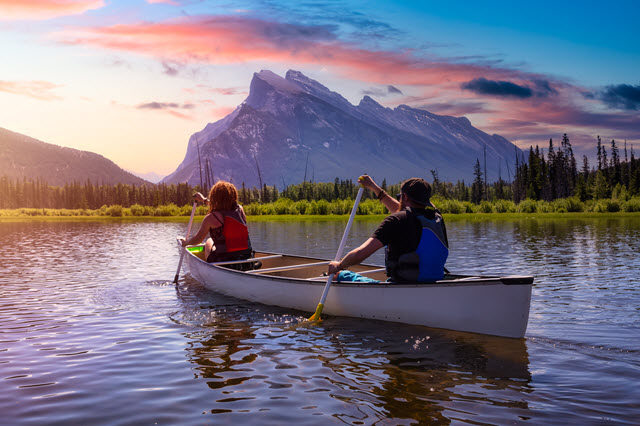
Another factor is the kind of rocker your canoe has. By rocker, I mean the extent of the curve between the back and front. The shape of your hull also impacts canoe speed. If speed is your priority, you will have to make do without as much storage space. When a canoe is narrow, it features sharper entry, and this is important in canoe speed. Wider canoe entry lines, on the other hand, have more bluntness on their entry lines. This slows them down.
There is also the question of symmetry and asymmetry. When you look at racing canoes, you’ll notice they have an asymmetrical hull shape. Additionally, they have features for optimizing speed such as a sharper bow entry line (while maintaining the necessary stability for efficiency), as well as the narrowness and length to optimize the length of your wave.
How You Paddle Impacts Canoe Speed
How experienced (or inexperienced) you are with canoe paddling, as well as your approach to paddling, will impact your canoe’s speed. If you’ve watched others paddle a canoe but have never done it yourself, you’ll be surprised at how challenging it can be.
Compared to many other recreational activities and sports, canoeing is pretty easy, and it’s something that even non-athletic people can learn to do very well. It’s all a question of practice and patience in perfecting your technique.
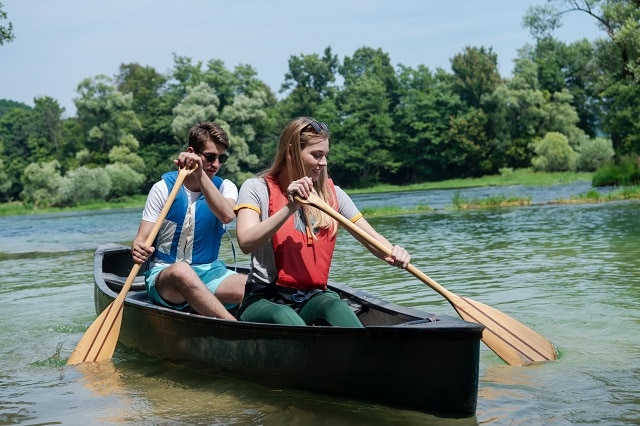
You wouldn’t just hop on a horse and expect to ride like an expert if you’ve never gone horseback riding. So, don’t just get in your canoe and expect to be a great paddler without putting in the work.
Stroke Rate
This refers to the rate at which you make strokes with your paddle. Of course, all other things being equal, the higher your stroke rate, the faster your canoe is likely to move.
You’ll notice your arm muscles developing better tone and strength as you get more canoeing practice. That factor combined with perfecting your paddling technique should help to improve your stroke rate.
If you have better than average physical fitness and strength, you should be able to achieve a better canoe speed than another beginner that doesn’t have those advantages.
How to Make Your Canoe Faster
Of course, stronger paddling will also make your canoe move faster. Your paddling is what makes your canoe move through the water. Of course, the exact techniques you use depend on whether you’re paddling in tandem (with a partner) or by yourself (solo).
If you’re solo canoeing, follow useful tips for your forward power strokes. This will help you move forward more efficiently. Try to make the strokes in close proximity to your canoe, as much as possible. However, make sure you’re not causing any scrapes or damage to your hull.
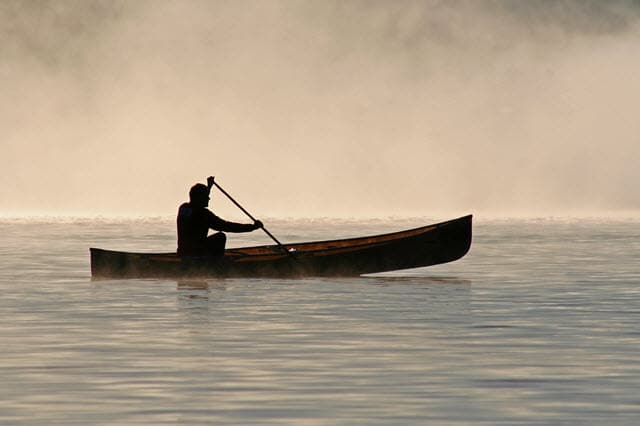
When you do this stroke correctly, you will cut down on how much the watercraft may drift to the side (right or left) and this, in turn, will improve speed and efficiency. As you become more advanced with canoeing, you will want to know how to turn around quickly.
To turn your canoe as quickly as possible in another direction, position your paddle so it’s angled outward. When making your stoke, reach out to a greater distance than you see with power strokes. If you have the leisure to do a gentler type of turn, you can make your turn with several strokes.
To do this, make the strokes to move forward on the side opposite to the intended direction of your turn. In other words, if you stroke on the left side of the canoe, the canoe should turn right.
Average Canoe Speed Compared to Walking Speed
To help us understand a canoe’s speed, let’s consider an average person’s walking speed.
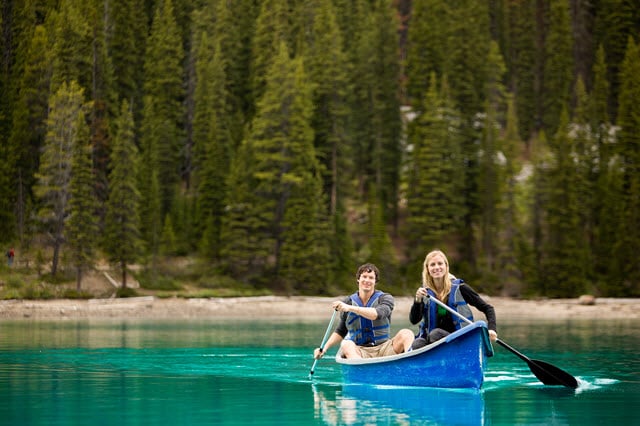
Many are surprised to learn that the average walking speed is a bit faster than the average speed of a canoe moving through the water. Most people paddling in a canoe will only get their watercraft to move at about 3 miles per hour. The average walking speed, however, tends to fall between 3 and 4 miles per hour.
But for me, it’s this slow pace that provides one of the joys of canoeing. Our lives are fast enough, and in my view it’s nice to slow things down, relax, and enjoy the world around us once in a while. Canoeing is a great way to do just that.

